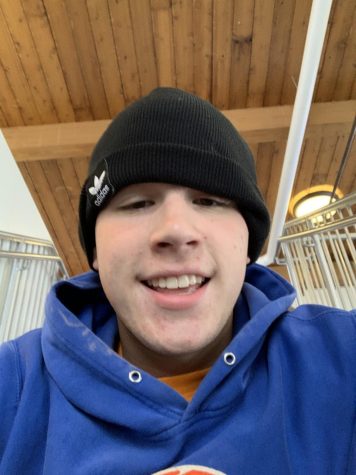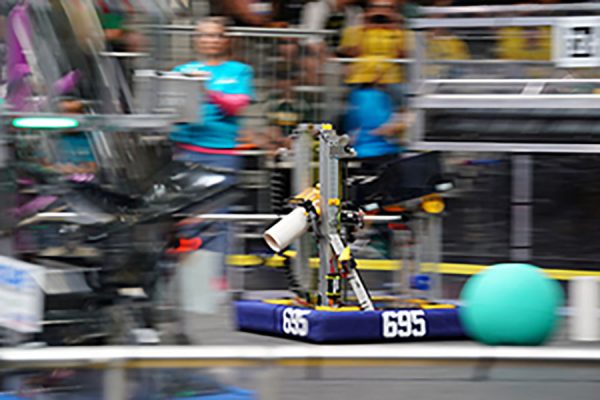How to Fight the Virus
Social Distancing, Testing and Contact Tracing Still Critical
At publication, the United States approaches the grim milestone of 100,000 deaths from COVID-19, with over 1.6 million confirmed cases.
Ohio has over 30,000 confirmed cases and almost 1,800 deaths.
Studies have shown that as many as 50% of people testing positive for COVID-19 do not exhibit symptoms, and it may take as much as two weeks for infected people to develop symptoms, so the real numbers of cases are likely much higher.
Asymptomatic, presymptomatic and mildly symptomatic individuals are known as silent spreaders, who may unknowingly spread the disease if they are not practicing safe social distancing.
This is why public health officials have emphasized that continued social distancing, as well as widespread testing and contact tracing are critical to controlling the coronavirus, especially if political leaders hope to reopen the economy without a new spike in cases.
The Importance of Social Distancing
Epidemiologists believe that death tolls would be much higher if quarantine and social distancing measures had not been implemented, and they estimate that 36,000 lives would have been saved in the United States by implementing these measures one week earlier in March.
Dr. Muhammad Husnain, a Beachwood resident who works at MetroHealth, explained that Ohio’s shutdown has significantly reduced the number of cases.
“The governor himself, and the whole team and all of the hospitals…have taken timely measures, focusing more on mitigating through social distancing,” he said.
“If you look at… the Ohio State University prediction, based on what they were seeing at that time, in March we were [predicting] 60,000 cases per day,” he added. “With mitigation, we [have seen much lower numbers] with all measures of social distancing and hygiene.”
Even at the peak in mid-April, new cases in Ohio have not exceeded 1,400 per day.
“If we stop taking these measures, we may see a spike again so we have to be very, very careful,” Husnain added.
Testing
COVID-19 testing kits require two main components — nasal swabs and reagent. The DNA collected with the nasal swabs is loaded into a machine that uses reagent (the general term for the chemicals used) to expose genetic material, which can then be replicated.
Once the genetic material is replicated millions or even billions of times, the lab will be able to tell how many and which viruses are present in the sample, leading to a positive or negative result.
A month ago, Ohio ranked near the bottom when it comes to testing, with only .88% of the state population having been tested.
Access to testing has not been easy to secure. Laboratories are fighting over limited resources to make the tests, and states are fighting over the kits themselves.
On May 4, Ohio Governor Mike DeWine announced a plan to dramatically increase testing. The state is teaming with two private companies for an adequate supply of reagents and swabs. Additionally, Ohio is prioritizing testing for patients and healthcare workers who are showing symptoms of the disease.
DeWine’s goal in May has been to ramp up daily testing from an average of 7,228 tests a day in April to 22,000 per day by the end of May.
According to Beachwood school nurse Kelly Debeljak, there are two different types of tests: molecular and serological.
“One test is where you put the cotton swab up your nose to check to see if you have the virus. This is molecular testing,” Debeljak said. “The other one is the one where you’re looking for antibodies to see if you’ve had the virus, which is serological testing.”
One has to wait at least 21 days after the first day of symptoms to accurately test for antibodies (serological).
Debeljak explained how doctors determine which test to use.
“If someone is actively experiencing symptoms of COVID-19, molecular testing can determine whether they actually have it,“ she said.
For months Governors have called on the federal government to lead testing efforts, but President Trump feels that it’s not the federal government’s responsibility.
“States, not the Federal Government, should be doing the Testing,” Trump tweeted in April. “But we will work with the Governors and get it done. This is easy compared to the fast production of thousands of complex Ventilators!”
Meanwhile, as Americans have scrambled to gain access to testing, some startups have created “at-home testing” kits. These kits can be ordered for $150-200 dollars a piece, but the FDA has warned that these testing kits are “unauthorized and fraudulent”.
Herd Immunity
Serological testing can be used to study herd immunity: when a large portion of the population has been infected with the virus and therefore built an immunity towards it, resulting in lower transmission.
Debeljak explained the theory behind herd immunity:
“In theory, if you’ve already had it, you shouldn’t be able to get it again,” she said. “My guess is that if you’ve had it before and you were to get it again, it would be much milder the second time, but we really don’t know yet.”
Unlike most other countries, Sweden has resisted lockdowns on public areas or restaurants. In late April, Swedish officials were hopeful that the approach seemed to be working, as they approached 60 percent of the population in some areas who had developed antibodies.
“In major parts of Sweden, around Stockholm, we have reached a plateau (in new cases) and we’re already seeing the effect of herd immunity and in a few weeks’ time we’ll see even more of the effects of that. And in the rest of the country, the situation is stable,” Dr. Anders Tegnell, Sweden’s chief epidemiologist, told CNBC.
However, more recent reports show that Sweden’s death rate has reached 32 per 100,000 people, higher than most other countries, including the United States.
Furthermore, the theory depends on the assumption that infected patients are immune, which may or may not be true.
Researchers are currently trying to determine whether COVID-19 antibodies will protect
recovered patients from reinfection, and if so for how long.
What Local Hospitals are Doing
Hospitals are on the front lines of the coronavirus pandemic, and as of mid-April, almost 20 percent of Americans infected with COVID-19 were health care workers.
Dr. Husnain explained how MetroHealth is responding to the crisis.
“Everyone entering the hospital is screened for symptoms of COVID-19, and if they have any symptoms, they cannot enter the hospital,” Husnain said. “This includes physicians, nurses and paramedical staff.”
“We [now] have to wear masks throughout our stay in the hospital, irrespective if we are taking care of COVID-19 patients directly or indirectly or taking care of other patients,” he added.
Additionally, hospitals have developed new rules surrounding visitors.
For instance, University Hospitals will not allow visitors who are positive for COVID-19, anyone with a fever or other symptoms of COVID-19 or any minors. Visitors are also asked about travel history, and if they came in contact with anyone positive for the virus. They will not allow any patients with Coronavirus to have visitors, along with any cancer patients or patients on general medical floors. Most other patients are allowed only one visitor.
The Cleveland Clinic has placed similar restrictions on visitors. For most patients, no visitors are allowed; patients who are pediatric, require special needs, or are in labour are permitted one visitor. Additionally, visitors must clean their hands using sanitizer or soap before and after visiting waiting rooms or clinical areas.
Additionally, hospitals are attempting to limit the number of staff members attending to each patient at a time.
“Only one doctor takes care of the patient,” Husnain explained. “For coronavirus patients, we only allow one doctor to go into the room at a time. This is a major change.”
“We had to suspend all the face to face educational activities, including lectures, and conferences, which are a daily routine… so we have to use zoom instead,” he added. “We are doing it all online.”
There is a worldwide shortage of masks and medical supplies, causing medical workers to go into hospitals at a higher risk because they aren’t sufficiently protected, according to CNN. Many medical workers have contracted the virus due to the lack of personal protective equipment. Medscape has compiled a list in memoriam of workers who died trying to cure others of this virus.
“For healthcare workers, there’s the risk of being more exposed to coronavirus than anyone else,” Husnain said. “So we want to make sure we follow all the policies in place for protecting ourselves… we want to make sure we are not a source of exposure… or carriers.”
Hospitals have stopped elective surgeries as well.
According to NBC, Ohio was one of the states that put a temporary pause on elective surgeries, however, as of May 1st, it started allowing them, but with many safety requirements, among those requirements are screenings and the necessity to wear a mask for patients and PPE for doctors.
According to the New York Times, the coronavirus has been a financial disaster for many hospitals, as they have had to spend more on the cost of treating the virus while they can no longer perform expensive elective procedures.
University Hospitals announced in late April that it would be cutting hours and pay to over 4,000 employees not directly involved in patient care.
Reopening the Economy
The economic impact of the shutdown has been tremendous.
The federal unemployment rate jumped from 3.5 percent in February to 14.7 percent in April, and well over a million Ohioans have filed for unemployment in recent months.
In early May, Governor DeWine announced $775 million in state budget cuts due to declines in tax revenue.
According to Manny Fernandez, writing for the New York Times, the brunt of the impact is being felt by those already impoverished.
“In times of natural disasters and large-scale emergencies, low-income families who are already living on tight budgets with overdue bills, unstable housing, poor health care and unsteady employment often bear the brunt of the pain,” Fernandez wrote.
In an effort to reopen the economy, Ohio has been lifting restrictions on businesses this month. On May 15, restaurants opened outdoor service and personal services such as barbershops and hair salons opened; many more facilities, including daycares and day camps will be open by the end of the month, although many local facilities have chosen not to open.
If you believe that you or a family member might have COVID-19, the CDC has an online “Self-Checker” to determine whether you should contact a medical professional.

Ian Stender began writing for the Beachcomber in 2018. He covers all types of stories. In addition to writing for the Beachcomber, he’s on the baseball...

Hiba Z. Ali began writing for the Beachcomber in fall of 2019. She covers diversity in the school. In addition to writing for the Beachcomber, she also...













